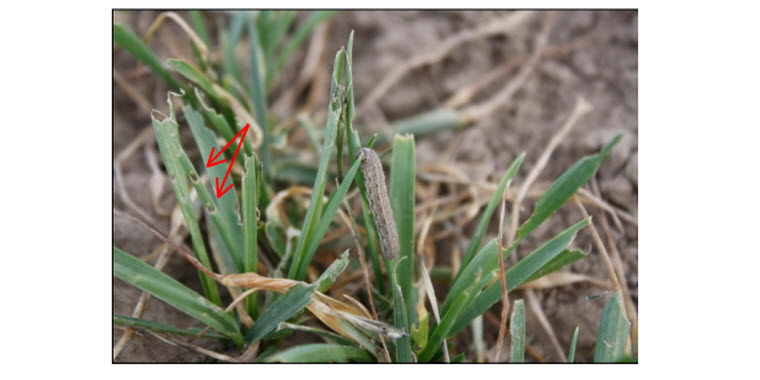by Kevin Wanner
After a few quiet years cutworms are again becoming more prevalent in Montana’s cropland. Army and pale western cutworms (AC and PWC) are the most common damaging species in Montana. The moths lay their eggs during the previous fall season. AC eggs hatch and the larvae begin feeding during the fall while most PWC eggs hatch in the spring. Early in the spring the caterpillars will become active and feed during warm periods. Early warm weather may have allowed AC larvae to increase in size, and damage to spring wheat crops can occur soon after seedling emergence.
Thin patchy stand development early in the spring can indicate cutworm damage. AC larvae feed above
ground on the leaves typically at night – watch for damaged leaves and plants chewed down to the stem.
PWC larvae feed below ground on the crown “cutting” the stem, leaving dead and wilting plants on the
ground. Cutworms are nocturnal and can be found during day by lightly scraping the soil surface in
areas where stand damage is visible.
[EasyDNNGallery|1740|Width|600|Height|600|position||resizecrop|False|lightbox|False|title|False|description|False|redirection|False|LinkText||]
In small grains, 4-5 AC larvae per square foot or 2-3 PWC larvae per linear foot are considered
economic thresholds and insecticide treatment is recommended. Cutworms are relatively easy to control
with insecticidal sprays (see High Plains IPM Guide http://highplainsipm.org/ for a list of insecticides).
For more information please refer to the MontGuide titled “Pale Western and Army Cutworms in
Montana”.
Source: MT Ag Alerts




